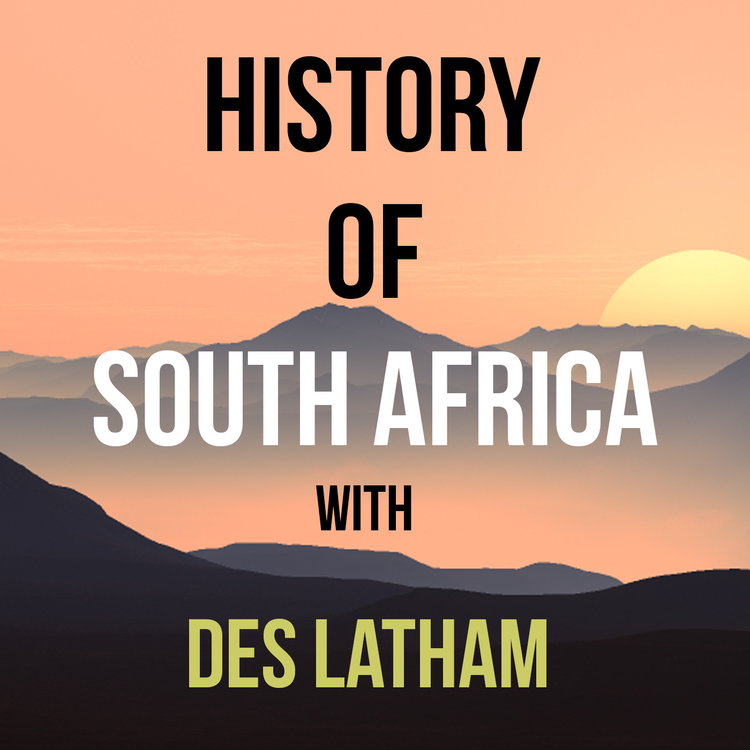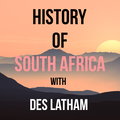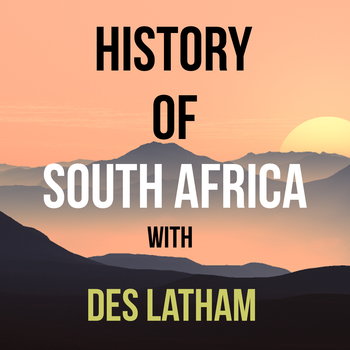
Episode 133 - Umkhandlu long thumb nails and tales of ill-gotten grain
Loading player...
It’s a hot day in northern Zululand, in the Mfolozi River valley, where Dingane’s capital emGungungudlovu was situated.
When Piet Retief first met the Zulu king, he failed the grasp the extent to which this man’s authority was was based in what historian John Laband calls a combination of mystical ritual and naked power politics.
That Dingane was a despot is clear but what was less understood was that his people allowed him to be so — that he could only make major decisions about political strategy with the input of important men and sometimes women, of the kingdom. The small inner sanctum of power, the umkhandlu, was a council that included the abantwana, the princes of the royal house.
Alongside these aristocrats were the izinduna, state officials that were appointed as commanders of the Amabutho regiments, some ruled over entire districts and administered justice in the king’s name.
Anyone was free to become an induna, unlike the umkhandlu, but only after members of the aristocracy were unavailable to take up that position. Because these induna were appointed, they had more to lose and did the king’s will more amenably.
Even so, one of these induna was going to balk when Dingane ordered him to kill Piet Retief and his small party of men that had been negotiating land in the first week of November 1837. More about that at the end of this episode.
Dingane’s main induna was Ndlela kaSompiti, his other was Nzobo kaSobadli, and both of these induna were of royal blood - linked to the royal house.
Oddly enough, the physical proof of their position was the permission to grow long fingernails.
Men of high status grew their nails, particularly thumbnails, longer than an inch and a half as a sign that they did not have to do manual labour, they were freed from having to hold hoes or wield implements.
They also wore another symbol of power, the ingXotha, a massive and heavy brass armlet that reached from elbow to wrist and looked a bit like an ancient Greek arm shield.
When Piet Retief arrived at emGungundlovu on the evening of 5th November 1837 they would not have noticed these emblems. The Zulu men were essentially semi-naked, only the ornaments, arm bracelets, beads, brass, worn below the knee and around ankles, bands of beads slung over the shoulder, indicated power. You had to look closely to be certain.
It so happened that Dingane was fully aware of who had done the rustling but he wanted Retief to pass a test. The Boer leader must embark on a quest, the Zulu king demanded the amaBunu prove themselves to him.
The baTlokwa it so happened had been rustling for the last two years anyway, this was not a recent phenomenon. So far, Sikhonyela had refused to send any of the cows back, and had insulted Dingane saying
“Tell that impubescent boy that if he wants to be circumcised, let him come and I’ll circumcise him…”
The Zulu custom of circumcision had been stopped in Shaka’s time as you know, but the baTlokwa continued with this rite of passage.
The baTlokwa lived on the upper reaches of the Caledon Valley, around more than 300 kilometers from where Dingane lived.
Retief knew that Dingane knew the real criminals were not him, but also realised it was an opportunity to demonstrate beyond doubt the good faith of the Boers and that Dingane was demanding proof of goodwill beyond mere words or little signed documents.
When Piet Retief first met the Zulu king, he failed the grasp the extent to which this man’s authority was was based in what historian John Laband calls a combination of mystical ritual and naked power politics.
That Dingane was a despot is clear but what was less understood was that his people allowed him to be so — that he could only make major decisions about political strategy with the input of important men and sometimes women, of the kingdom. The small inner sanctum of power, the umkhandlu, was a council that included the abantwana, the princes of the royal house.
Alongside these aristocrats were the izinduna, state officials that were appointed as commanders of the Amabutho regiments, some ruled over entire districts and administered justice in the king’s name.
Anyone was free to become an induna, unlike the umkhandlu, but only after members of the aristocracy were unavailable to take up that position. Because these induna were appointed, they had more to lose and did the king’s will more amenably.
Even so, one of these induna was going to balk when Dingane ordered him to kill Piet Retief and his small party of men that had been negotiating land in the first week of November 1837. More about that at the end of this episode.
Dingane’s main induna was Ndlela kaSompiti, his other was Nzobo kaSobadli, and both of these induna were of royal blood - linked to the royal house.
Oddly enough, the physical proof of their position was the permission to grow long fingernails.
Men of high status grew their nails, particularly thumbnails, longer than an inch and a half as a sign that they did not have to do manual labour, they were freed from having to hold hoes or wield implements.
They also wore another symbol of power, the ingXotha, a massive and heavy brass armlet that reached from elbow to wrist and looked a bit like an ancient Greek arm shield.
When Piet Retief arrived at emGungundlovu on the evening of 5th November 1837 they would not have noticed these emblems. The Zulu men were essentially semi-naked, only the ornaments, arm bracelets, beads, brass, worn below the knee and around ankles, bands of beads slung over the shoulder, indicated power. You had to look closely to be certain.
It so happened that Dingane was fully aware of who had done the rustling but he wanted Retief to pass a test. The Boer leader must embark on a quest, the Zulu king demanded the amaBunu prove themselves to him.
The baTlokwa it so happened had been rustling for the last two years anyway, this was not a recent phenomenon. So far, Sikhonyela had refused to send any of the cows back, and had insulted Dingane saying
“Tell that impubescent boy that if he wants to be circumcised, let him come and I’ll circumcise him…”
The Zulu custom of circumcision had been stopped in Shaka’s time as you know, but the baTlokwa continued with this rite of passage.
The baTlokwa lived on the upper reaches of the Caledon Valley, around more than 300 kilometers from where Dingane lived.
Retief knew that Dingane knew the real criminals were not him, but also realised it was an opportunity to demonstrate beyond doubt the good faith of the Boers and that Dingane was demanding proof of goodwill beyond mere words or little signed documents.

